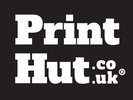Confused about the printing process and how to prepare your work for print? We print things at home every day, but most of us do not realise what is involved in printing professional pieces. These guidelines should help to explain the basics.
CMYK or RGB?
If your output is going to be printed then CMYK is the way forward. CMYK stands for Cyan, Magenta, Yellow and Black. In the past, any printed image was broken down into these separate inks and printed on separate plates over the top of each other. Today’s printing methods still work on the same theory although spot colours are also available.
RGB stands for Red, Green and Blue which is the coloured light given off by our computer screens. Any output for use on a screen should be produced in RGB. One of the problems of this digital age has been converting between the two systems to produce images of the same colour, whether in print or on screen.
Crop and Bleed Marks
If your work is full colour (where print touches the edge), or it is being printed from a roll (rather than separate sheets) then it will need to be trimmed. If the line is not cut perfectly then your edge could have a gap along its edge. To ensure that this does not happen to add bleed to your document. Bleed is where the image travels across the trim line, usually by 3mm around each edge. This means that any slight imperfections are accounted for and your design remains pristine. This is more of an issue with photographic images because you need to remember that a 3mm border of your image will be cut off. Adding bleed and crop marks to your document tells the printer where any cuts need to be made, and how much leeway is available.
The Safe Area
The safe area is within both the bleed and trim areas. This marks the zone that will not be cut into despite any trim discrepancies. Any work outside of the safe area is at possible risk of being trimmed.
If you work is going to be folded, for example, a brochure with a large number of pages, then the safe area needs to be distanced from the fold point as well as the trim marks. If you have a large number of pages then the double page spreads cannot open flat. The area next to this fold loses some visibility in the fold and binding.
Paper Size
Due to bleed and crop marks your work may need to be printed onto larger paper than originally anticipated. An A4 image with bleed marks will need to be printed on paper at least 6mm larger in both directions. Paper sizes can be a great restriction when choosing where to print your work. Never assume a printer will have the paper size, paper weight, or paper stock that you require. Always leave time to visit a printer and get a test print.
Converting to PDF
Documents ready for print should be a high-resolution PDF, however, printers may accept files from design programmes such as InDesign and Illustrator, or image files. If you are using Illustrator or Photoshop to create your work, remember to add guides to show the trim area. If you are using InDesign, you can create a file with bleed and choose to use document bleed settings, and include bleed and crop marks, when you export to PDF.
Check, check and check again to print your work to a standard you can be proud of. Happy designing.
